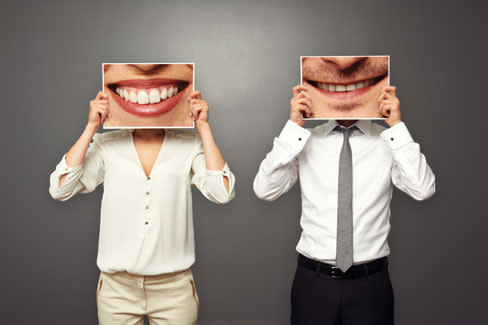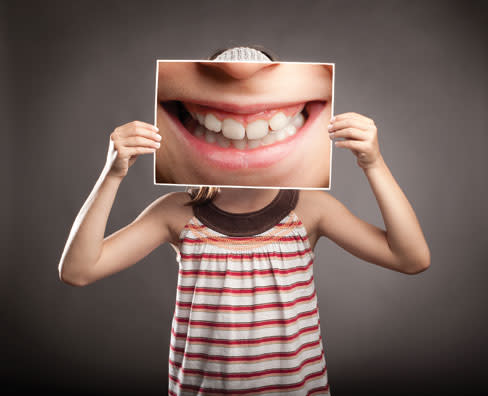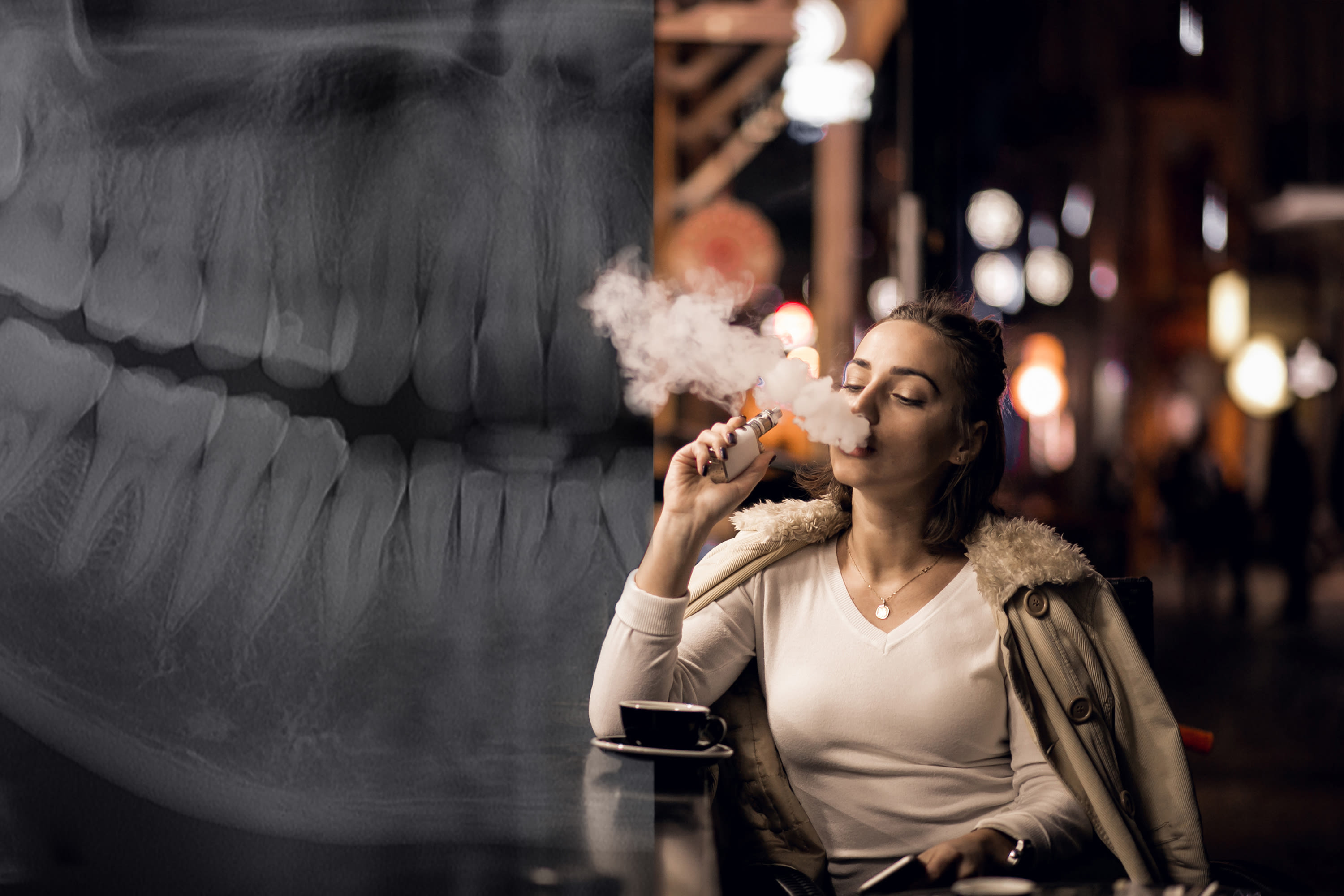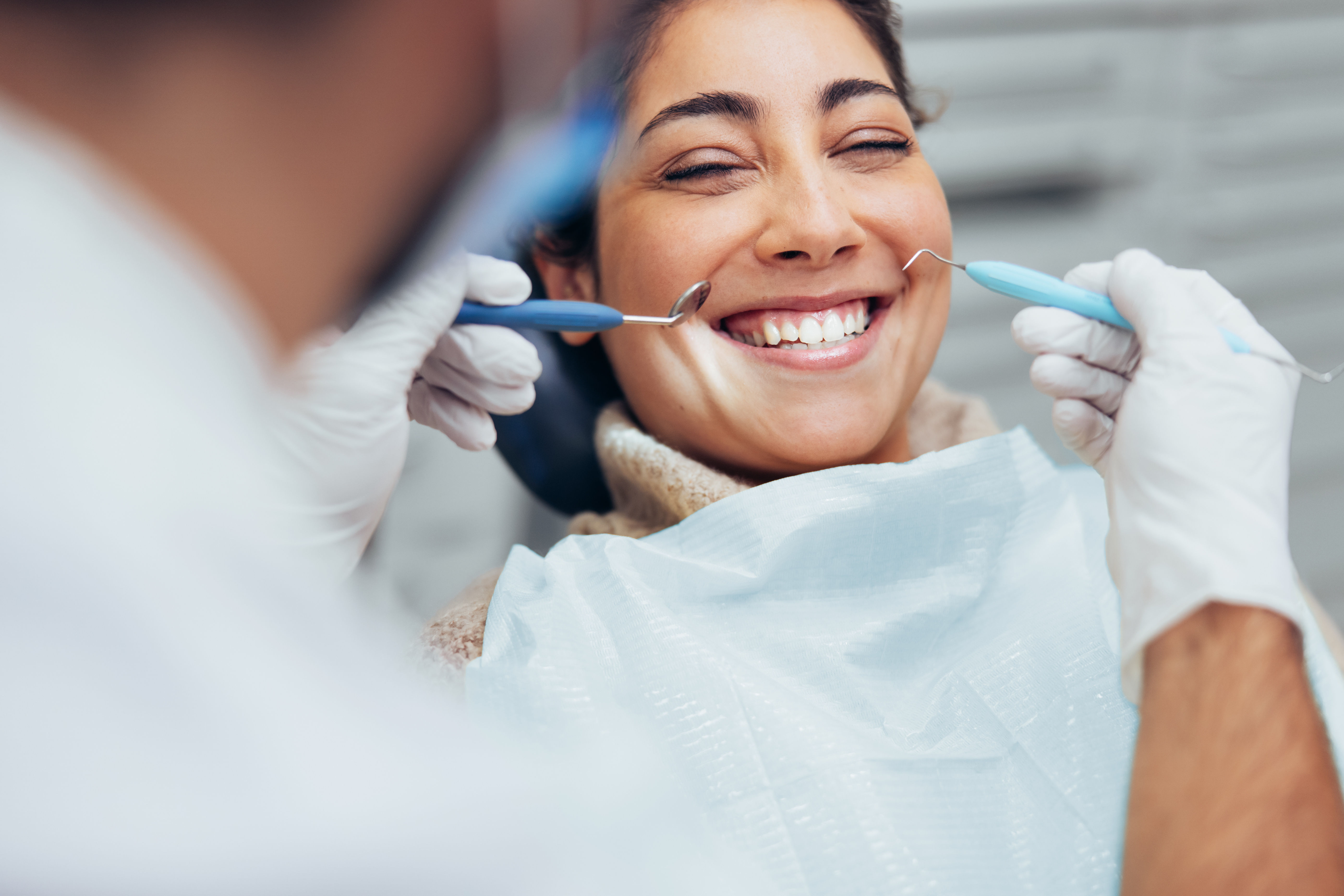How to Overcome Your Fear of the Dentist

Fear of dentistry. It's a running gag going back to the Three Stooges—all those cringe-worthy scenes of a victim squirming in a chair while the dentist reaches for a pair of pliers and an industrial-sized power drill. You're probably not laughing, but that's understandable. It's a very old joke.
And out of date, too, since we've left behind the dark ages of dentistry. Contemporary, high-tech dental care is both astonishingly precise and essentially pain-free. Lasers can mend cavities without the use of drills or anesthesia. High-definition digital X-rays reveal far more detail while using up to 90 percent less radiation.
As many as 15 percent of Americans say they still avoid going to the dentist because they're afraid. But local dentists tell us those fears are all but unfounded. Here's a glimpse at where dentistry is today—and where it's going in the not-too-distant future.
Faster, Better, More Precise
Today's dentists work with better tools and measure with more accurate devices. High-tech dentistry means less time in the dentist's chair. Many procedures that once demanded several visits can now be performed in a single visit.
The root canal is no longer a source of dread. As an added bonus, it's no longer a dreadful waste of time. What used to be three grueling sessions lasting an hour or more has become a single session taking an hour or less. Instead of filing teeth down by hand, the dentist employs a nickel-titanium file on a low-RPM drill. The reinvented procedure takes less time, costs less money, and is nearly pain-free.
Thanks to digital imaging and on-site fabrication, crowns can be created in less than half an hour. This is only possible for individual teeth—for now.
The "no-drill fill" offers a noninvasive option for the early stages of tooth decay. In this phase, calcium has been leached from the tooth enamel, leaving pores that will eventually converge and form a cavity. In the drill-free procedure, the dentist uses a gentle acidic solution to clean out the damaged enamel, and then fills the pores with transparent resin.
These new techniques take less time and cost less money. Best of all? They hurt less. Pain is so 20th century.
Pain-Free Dentistry. No Kidding.
Local anesthesia has also taken a great leap forward. Novocain isn't the all-purpose pain killer it used to be. Today's high-tech dentist has a range of anesthetic options in varying degrees of strength, including lidocaine, bupivacaine, mepivacaine and septocaine. Each is tailored to a patient's needs and possible allergies. The result? Pain-free dentistry for almost every form of treatment.
William K. Urschel, D.M.D., who specializes in general, aesthetic and reconstructive dentistry, says this new generation of anesthetics has "revolutionized" his Venice practice. "Whether topical or injectable, these anesthetics are faster acting, more profound and of shorter duration," he says.
Anesthetic delivery systems have also improved. Urschel notes that vibration techniques and computerized delivery systems target anesthesia more precisely to the desired site and reduce the sensation of numbness to other areas of the mouth. Patients can also enjoy the benefit of epinephrine-free anesthesia to avoid the feeling of anxiety and heart palpitations that epinephrine may cause.
To lessen the feeling of an injection, dentists can now utilize advanced topical anesthetics in combination with an anesthetic buffering system. "We've learned that the pain patients experience with an injection is partly from the anesthetic's acidic pH level—and not just from the needle itself," Urschel says. "The buffering system changes the pH of the anesthetic to a sting-free level." He adds that raising the pH level also makes the anesthetic work faster.
"Just a few years ago, a patient would have to wait 10 to 20 minutes for the anesthetic to take effect," he says. "With these new anesthetics and techniques, there's hardly any wait time at all."
And there's almost never any pain. Thanks to the new generation of topical gel anesthetics, even routine dental cleanings are far more comfortable than they used to be. These gels offer site-specific, needle-free anesthesia. Even better? They wear off after about 25 minutes, allowing patients to get back to their normal daily activity without pain.
New anesthetic compounds make all this possible. But sometimes, the old standbys work best. Nitrous oxide, for example. Sarasota's Dr. Jill Morris is a big believer in it if the patient wants it. "My patients love the benefits," she says. "Nitrous oxide wears off immediately, so they can drive home."
For cases demanding more serious sedation, Morris has privileges at a local outpatient surgical center. "We work with anesthesiologists who apply general anesthesia if a patient wants to be totally put out," she says, adding that her colleague, Dr. Burr Bakke, has advanced training in IV sedation, which they can do in-house.
Urschel notes that anesthesia doesn't simply deal with physical pain. It deals with the mind's response to pain. Call it the anxiety factor. And sometimes, anesthesia is the best way to deal with it. "About 25 percent or more of new patients present with some level of fear and anxiety, most commonly from a past dental experience," Urschel says. "For these patients oral, gas or IV sedation
is available."
That being said, there are also ways to reduce anxiety without medication.
Good Dentistry Is Good Psychology
The advancement of modern dentistry goes beyond improved technology. "Today's dentists have a deeper understanding of psychology," says downtown Sarasota dentist Dr. Timothy G. Herring. "They understand the source of dental phobia, and know how to deal with it."
Progressive dentists let their patients know exactly what they're going to be feeling. During each procedure, a good dentist constantly asks his patients for feedback—and permission to keep going. The patient can put on the brakes at any time. Bottom line? According to Herring, "The source of fear is the sense of losing control. These techniques all affirm that the patient is in complete control."
Communication is vital. Herring and his staff make sure they know everyone on a first-name basis. "Each member of our staff genuinely cares about each patient—and they show that in every transaction. That goes a long way to making people feel comfortable and relaxed."
Communication is especially important when a patient has a history of traumatic dental experiences, notes Morris. "We sit down and really listen to their fears and concerns," she says. "Dealing with dental phobia doesn't get in the way of our treatment—it's part of it."
Words can calm. But some messages are wordless. Which leads us to another insight modern dentists have borrowed from the field of psychology: A peaceful setting creates a peaceful mind. And what could be more peaceful than a spa?
Relax—You're in the Dentist's Office!
The 21st-century dentist's office is anything but clinical. Chances are, you'll see calming colors, hear the sound of running water. Instead of stacks of ancient magazines, you'll see personal TV screens and digital devices offering both distraction and meditation. All in a spa-like setting that says relax.
Urschel says his lobby area is a relaxing, tranquil environment—by design. Patients enjoy the dimmed lighting, aromatherapy, meditation DVDs, and a soothing color scheme. "Our wall color is so popular, our patients are always asking what it is," he says.
For Herring's office décor, he chose soft greens and whites that are "inviting, soothing, and clean. The warm wood accents and leather furnishings help our patients feel at home."
In addition to physical space, there are also relaxing spaces of the mind. For decades, patients have been told to perform their own relaxation techniques, like controlled breathing and visualization. Nowadays, the dentist can help you with these procedures, too.
For example, along with a calming interior design scheme, Morris offers her patients a variety of meditation and visualization techniques. She testifies to the effectiveness of virtual reality goggles, which can induce profound relaxation in less than 10 minutes. "The patient watches a sequence that blends colors and frequencies to trigger the brain into a deep relaxation state," she says. "When you combine that with relaxing music, the experience is heavenly. It stimulates health benefits throughout the body without the use of any drug or medication."
On the Horizon
When it comes to modern dentistry, the news is all good. And you ain't seen nothing yet. The next 20 years promise a quiet dental revolution based on two main elements: bioinformatics and biomimetics. Bioinformatics is the convergence of dentistry and information science. In practice, that means more detailed dental records, instantly available to any dentist on the planet. On top of that, dentists will have access to specific drugs and treatments tailored to each patient. Biomimetics is nothing less than the imitation of nature. Teeth are grown, after all. Today's dentists can replace a lost tooth with a fairly convincing inorganic substitute—but it's not a living tooth. That may soon change. The possibility of replacing teeth, bone, muscle and other body parts with biological materials is not that far away.
Morris notes that none of these present and future breakthroughs helps if a patient refuses to see a dentist.
"Many people don't realize how far we've come," she says. "They don't appreciate the vast journey that 21st-century dentistry has taken. As a result, they don't take the journey across a few city blocks to see the dentist. But there's no better time than now to begin to care for your teeth."

Taking Charge
Even if your mind tells you that you'll be just fine, your body may still fear that dentist's chair. Here are a few tips that may help you overcome your fear:
Go to that first visit with someone you trust, such as a close relative, who has no fear of dentists.
Seek distraction while in the dentist's chair. Listen to your own music on headphones. Or find a dentist with a TV or other distractions available in the treatment room.
Try relaxation techniques such as controlled breathing. This will slow your heartbeat and relax your muscles. Another technique is progressive muscle relaxation, which involves tensing and relaxing different muscle groups in turn.
Review with your dentist which sedatives are available or appropriate. Options include local anesthetic, nitrous oxide ("laughing gas"), oral sedatives and intravenous sedation.
If you can't bring yourself to go to any dentist, you might want to try seeing a psychologist first, says Ronald Kleinknecht, Ph.D., a clinical psychologist at Western Washington University and co-author of Treating Fearful Dental Patients. The most tried and true therapy is what Kleinknecht calls "direct therapeutic exposure." It involves introducing the patient to the feared item—say, a needle—in a gradual and controlled manner.
Source: WebMD



